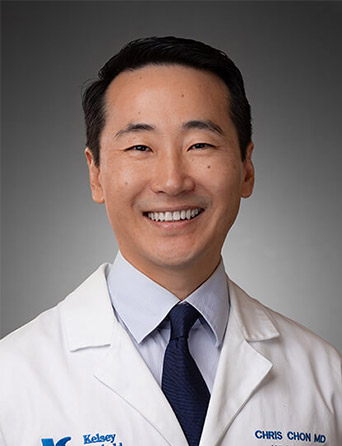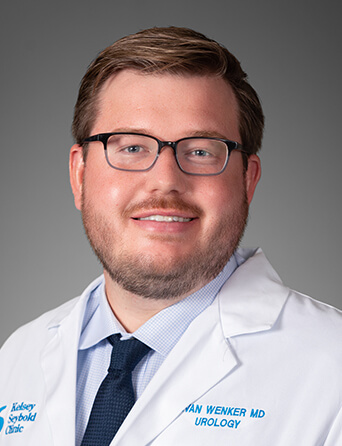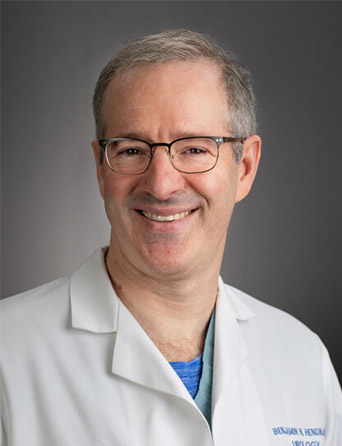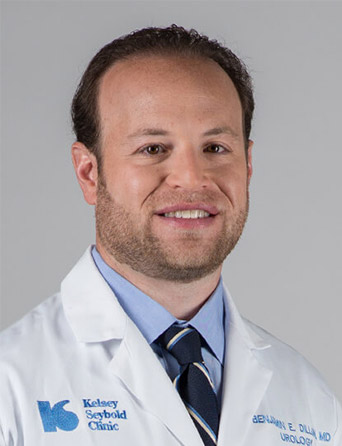Join Our eNewsletter!
Subscribe to our monthly newsletter to receive encouraging advice to help you lead a healthy lifestyle.

The Facts About Testicular Cancer
Testicular cancer is rare, so much so that many people weren’t even aware of it until the mid-1990s when cyclist Lance Armstrong was diagnosed with Stage 3 testicular cancer. But with approximately 9,000 new cases diagnosed each year in the U.S., it’s the most common form of cancer in males between the ages of 15 and 35.
Testicular cancer is also responsible for around 460 deaths in the country annually; however, the five-year survival rate is 99% when diagnosed in the early stages. Unfortunately, half of all men diagnosed with testicular cancer don’t seek medical care until after the cancer has spread to other parts of the body. That’s why awareness and early detection are so important.
What Is Testicular Cancer?
As with all cancers, testicular cancer develops when healthy cells begin to change and become abnormal. These cells grow and multiply uncontrollably, forming a mass or tumor. In this case, tumors develop in the testicles. Almost all testicular cancers start in the germ cells, which are cells in the testicles that produce immature sperm.
Detection and Symptoms
Testicular cancer is typically detected as a lump or swelling in one of the testicles, which is also usually the first symptom. Most of the time, lumps are not found by a doctor, but by the man himself. For this reason, males should begin performing testicular self-exams at age 15. While cancer can develop in both testicles, it most often only affects one.

Most men in the early stages of testicular cancer don’t experience pain or feel ill. There are some signs that can appear at this time, however.
- A change in the size of the testicles, which can be enlargement or significant loss of volume
- A feeling of heaviness in the scrotum, possibly caused by a sudden collection of fluid
- Pain or discomfort in the scrotum or one or both testicles
- A dull ache in the lower abdomen, groin, or back
- Enlargement or tenderness in the chest/breasts
Although some men don’t have any noticeable symptoms until the disease has progressed significantly, a man may experience the following symptoms once the cancer has spread to other parts of the body.
- Abdominal pain due to enlarged lymph nodes or the cancer spreading to the liver
- Lower back pain from the cancer spreading to lymph nodes in the abdomen
- A cough that doesn’t go away, shortness of breath, or chest pain from the cancer spreading to the lungs
- Frequent headaches or confusion from the cancer spreading to the brain
Diagnosis and Testing
If a lump or swelling is detected during a testicular self-exam, medical care should be sought as soon as possible. A physician will conduct a physical exam, go over medical history, and order an ultrasound of the scrotum. If the ultrasound indicates a solid tumor or mass, a procedure called a radical orchiectomy will likely be performed. During the procedure, the affected testicle is surgically removed. While this may seem drastic, a biopsy unfortunately can’t be performed for testicular cancer because the biopsy itself can increase the chances of the cancer spreading to other parts of the body. After the testicle is removed, a sample of it is tested to determine if cells are cancerous.

If the biopsy indicates cancerous cells, the doctor may order additional tests, including:
- Blood tests to detect elevated tumor markers
- CT scan to check if the lymph nodes in the abdomen or pelvis show any signs of cancer
- Chest X-ray to check if the cancer has spread to the lungs or chest cavity
These tests are used for staging, the process doctors use to determine if the cancer has spread and, if so, how far.
Causes and Risk Factors
The exact cause of testicular cancer is unknown. Since it’s generally found in young men, the usual risk factors for cancer, such as smoking and diet, are most likely not to blame. There are a few factors that have been found to be possible contributors to testicular cancer, but many men who do have the cancer don’t have any of these risk factors.
- Undescended testicle(s) – The most common connection to testicular cancer is cryptorchidism, when one or both testicles fail to move from the abdomen to the scrotum before birth. Even if the testicles eventually descend, this is still a significant risk factor. Men who have had an undescended testicle are up to 17 times more likely to develop the cancer.
- Family history – If a man has a father or brother with testicular cancer, it may increase his risk of developing the cancer.
- Klinefelter syndrome – This genetic condition, in which a man has an extra X-chromosome, has been linked to an increased risk of testicular cancer.
- Age – While testicular cancer can develop in males of any age, young men between the ages of 15 and 35 are at the highest risk.
- Race – Caucasian men are 4.5 times more likely than black men to have testicular cancer.
It should be noted that there’s no evidence activities such as bike riding and horseback riding contribute to testicular cancer. There’s also no way to prevent testicular cancer.
Treatment Options
After removal of the affected testicle, treatment depends on the stage of cancer. If the cancer hasn’t spread to other parts of the body, the usual course of action is to observe closely for up to 10 years. Tests are performed every few months to determine if the cancer has spread.
If the cancer has spread beyond the testicle, surgery may be performed to remove nearby lymph nodes, typically in the abdomen and pelvis. Radiation therapy and chemotherapy are usually recommended for Stages II and III.








